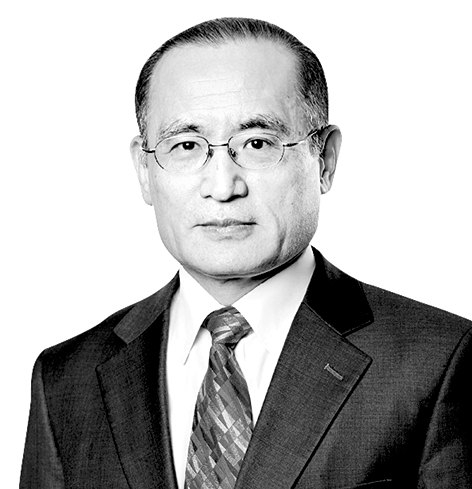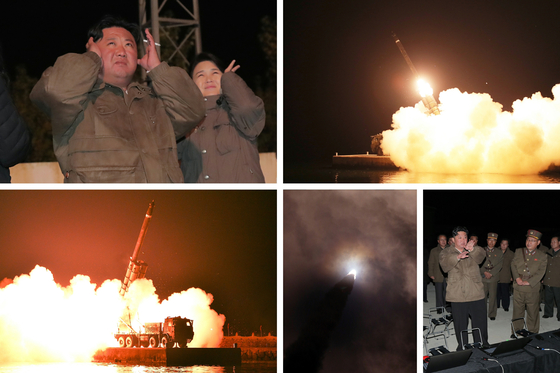How to respond to the North’s tactical nukes

The author is a former South Korean representative to the six-party talks and head of the diplomacy and security division of the JoongAng Ilbo’s Reset Korea campaign.
The missiles North Korea fired on seven occasions early October ratcheted up its provocation to new levels. What the North did was training for a nuclear attack with its tactical nuclear weapons unit, not a missile test. Targets of the attack were the military command headquarters and airports in South Korea. The drills orchestrated by North Korean leader Kim Jong-un were the first since the legislation of nuclear attack. Pyongyang’s message was clear: escalating the level of threat and checking U.S. and Japanese military support for the South by showing its capability to strike them in times of crisis.
The alarming developments on the nuclear front provoked lots of discussion on how to respond to the threat. But the debates based on unrealistic solutions confound us. It is time to build a public consensus on responding to the nuclear threat posed by North Korea. To effectively deal with it, South Korea must reinforce nuclear deterrence and find room for diplomacy. Given the apparent incompatibility between the two approaches, South Korea must pay heed to striking a careful balance between them.
But Korea’s own nuclear development cannot be an answer. Given inevitable international sanctions against the idea, it cannot be a solution, particularly for a country with heavy reliance on trade. National unity is a prerequisite for weathering such sanctions. But internal division has reached serious levels.
The other option is redeployment of U.S. tactical nukes in the South. But there are constraints because America opposes it. The U.S. thinks it can drop or fire tactical nukes swiftly without redeploying them in the South. The redeployment also violates the 1992 Inter-Korean Basic Agreement which stipulates denuclearization of the Korean Peninsula.

A bigger problem is the possibility of China and Russia opposing the redeployment in South Korea. It will most likely trigger a conflict more serious than during the period of the Thaad deployment in the South. If so, it will be more difficult to expect cooperation from China and Russia over the North Korean nuclear issue. If Russia were to use tactical nukes in Ukraine — and if the U.S. drastically changes its nuclear course — the redeployment can be considered. Otherwise, it cannot be a realistic solution.
The next option is a permanent deployment of U.S. strategic assets in the South. But America opposes it. The U.S. only operates them when it needs to. If the strategic weapons are deployed in the South on a permanent basis, China and Russia will regard it as a security threat and that will prompt unnecessary tension between America and China and between the U.S. and Russia. Considering the different U.S. position on South Korea’s own nuclear development, tactical nuclear weapon redeployment and permanent strategic weapons deployment, the more debates the two allies have, the more they help North Korea play its cards.
The remaining option is a stronger U.S. commitment on reinforcing its extended deterrence to unfurl its nuclear umbrella for allies in times of crisis. Whether it be the NATO model or a Korean model, Seoul must consult with Washington over a more detailed action plan to assure a precise activation of nuclear umbrella. Such a plan should be based on solid trust in the immediate provision of the strategic umbrella when the need arises. That will help manifest America’s determination to provide the help when its ally needs it. That will also help calm the growing demand for nuclear armaments or tactical nuclear weapon redeployment in South Korea.
At the same time, South Korea must endeavor to widen the diplomatic space. Pursuing strengthened nuclear deterrence while taking a dovish path could sound contradictory at first glance, but I am not proposing an inter-Korean dialogue start immediately. Because a half-baked proposal will certainly be rejected by North Korea — and in that case, it will only help worsen public opinion in South Korea — it is better not to make such a proposal in the first place. Instead, South Korea must deal with the North with principles and build the momentum for diplomacy together with neighbors to bring the recalcitrant state to the negotiating table.
What really matters is a South Korea reinforcing nuclear deterrence while not falling into the trap of confirmation bias between Seoul and Pyongyang. Even if South Korea strengthens cooperation with the U.S. and Japan, it must be careful not to overly provoke China and Russia as South Korea needs to manage its relations with the two even if the country inevitably leans toward Uncle Sam. That will help Seoul make room for cooperation with Beijing and Moscow over the denuclearization and peace of the Korean Peninsula.
Translation by the Korea JoongAng Daily staff.










with the Korea JoongAng Daily
To write comments, please log in to one of the accounts.
Standards Board Policy (0/250자)